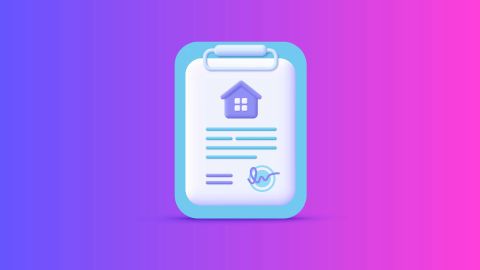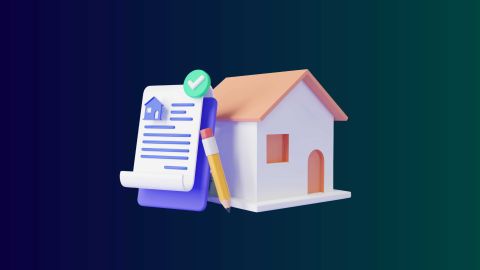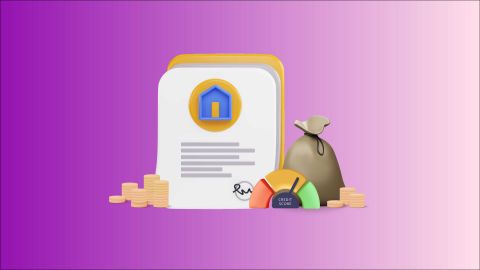About Home Loan Interest Rates
Bajaj Finserv home loan comes with an attractive interest rate starting from 8.50%* p.a The attractive structure of fees and charges allows you to repay comfortably and lower EMI of Rs. 733/lakh*. By meeting our simple eligibility parameters and minimum home loan document requirements, you can get ample funds to buy, construct, or renovate your home.
You can also choose to transfer your existing home loan to us by following a simple process. Our balance transfer facility comes with an array of features including competitive housing loan interest rate and a high-value top-up loan. What’s more, it comes with nil part-prepayment and foreclosure charges.
Apply for a home loan online and get a step closer to fulfilling your dream of owning your house. Below are the floating interest rates for home loans and top up loans.
Home Loan Floating Interest Rates
| Loan Type | Home Loan |
|---|---|
| Interest Rate Type |
Floating |
| For salaried applicants | 8.50%* to 15.00%* p.a. |
| For self-employed applicants | 9.10%* to 15.00%* p.a. |
Interest Rate for Home Loan Top Up
| Loan Type | Top Up Loan |
|---|---|
Interest Rate Type |
Floating |
For salaried applicants |
9.80%* to 18.00%* p.a. |
For self-employed applicants |
9.80%* to 18.00%* p.a. |
* The values in tables are subjected to change. To check the latest applicable interest rates click here.
Types of Interest Rates on Home Loans
There are two types of home loan interest rates. Read on to get a detailed insight into both.
1. Fixed rate of interest
A fixed interest rate remains constant for the entire loan tenure. It allows you to estimate the total repayment liability and interest outgo at the beginning of the loan tenure. Availing of a home loan at a fixed rate of interest helps in planning repayment and managing finances efficiently.
A fixed lending rate on home loans is suitable during times when there is a possibility of an increase in interest rate in the future. However, a fixed rate of interest may not be suitable under circumstances that predict a decreasing trend in home loan interest.
2. Floating rate of interest
Unlike fixed rates, floating interest rates are variable and change over the loan tenure. Based on the benchmark rate linked to housing finance, the floating interest rate increases or reduces.
You can opt for a floating interest rate on home loans when the market changes indicate a trend of falling rates. A floating rate of interest, however, may not be suitable during high market volatility as the risk of rising rates exists and can result in increased interest accumulation over time.
Remember, fixed rates are usually 1–2.5% higher than floating interest rates. However, you can also switch from fixed to floating interest rate and vice versa during the loan tenure based on your requirements.
Fixed Vs Floating Interest Rate on Home Loan
Fixed Interest Rate |
Floating Interest Rate |
Fixed interest rate remains constant throughout the entire term of loan or investment. |
Floating interest rate fluctuates based on the changes in the market or economy. |
Fixed interest rates are calculated at the beginning of a loan and remain the same for the entire term. |
Floating interest rates are based on a benchmark interest rate, such as the prime rate, plus a margin set by the lender. This means that the interest rate can fluctuate over time. |
Fixed rate loans do not have caps since the interest rate is set at the beginning of the loan term. |
Many floating rate loans have interest rate caps, which limit how much the interest rate can increase or decrease in a given period. |
How to calculate home loan interest rate
There are three different methods that you can use to calculate your home loan interest. Here is a step-by-step guide.
1. Using the interest formula
To calculate home loan interest, you can follow the below steps and use the formula:
Interest = Total Payable Amount - Principal Amount
Where Total Payable Amount = Tenure * 12 * EMI
To calculate EMI you can use the below formula.
EMI = [P x r x (1+r)^n]/ [(1+r)^n-1]
Here, ‘P’ is the principal or loan amount, ‘r’ is the rate of interest on offer and ‘n’ is the tenor of the loan in months.
2. Using Microsoft Excel
A simpler option is to use Microsoft Excel and calculate EMIs using the ‘PMT’ function, which is = PMT(RATE,NPER,PV,FV,TYPE)
Here, ‘RATE’ is the interest rate offered divided by 12, ‘NPER’ is the number of EMIs, and ‘PV’ is the principal amount. Set the value of both ‘FV’ and ‘TYPE’ to 0.
3. Using a home loan EMI calculator
Using a home loan calculator is the simplest option and guarantees error-free results every time. These are the steps to follow.
- Enter the loan amount in the field marked ‘Loan Amount’
- Input the interest rate under ‘Interest Rate’
- Choose a tenor under the ‘Tenor’ field
- Click ‘Calculate’ to get your results
What is effective interest rate?
Base rate: The base rate refers to the standard lending rate set by the bank, which is applicable to all retail loans. It can be adjusted periodically by the bank based on various factors such as the cost of funds, operational expenses, and market conditions.
Effective interest rate formula
Thus, the Effective Interest Rate (EIR) = Base rate + Markup
Note: The Reserve Bank of India (RBI) replaced the base rate system with the Marginal Cost of Funds-based Lending Rate (MCLR) in April 2016. MCLR was brought in to provide more accountability and flexibility to how rates are published by financial institutions in the country. The country’s apex bank mandates commercial banks to analyse the risk factors associated with lending to borrowers before ascertaining interest rates.
Factors that affect home loan interest rate and EMI
Several factors affect the home loan interest, and it is important for you to learn about them as they impact how easily you can repay the loan. These factors also impact your EMIs as any change in interest rate is directly proportional to a change in the instalment amount you pay.
Type of interest rate
Home loan borrowers can opt for a floating rate during trends of falling market rates. Fixed rates, on the other hand, can be suitable when the lending rates are set to rise in the future.
Mixed rates of interest result in interest levied at a fixed rate at the onset of the home loan tenor and converted to floating rates after a set period.
Repo Rate and other Benchmark Rate of Lending
Benchmark lending rates can either be Marginal Cost of Funds based Lending Rate (MCLR) or Repo-Linked Lending Rate (RLLR). Financial institutions decide a reset period for MCLR for durations of 3 months, 6 months, 1 year, or 2 years across the home loan tenor and levy interest rates accordingly. RLLR is directly linked to the RBI’s repo rate and bears a quick adjustment with every change in the policy rates.
A reduction in the RBI’s key policy or repo rate and market competition pulls down the housing loan interest rate and vice versa.
The RBI has decided to phase out MCLR-based lending over time to introduce a more transparent and repo rate-receptive RLLR to offer affordability to customers and improve the overall financial system.
LTV or Loan-to-Value ratio
LTV is the maximum loan amount a lender extends to home loan applicants as a percentage of the property’s current market value. A high LTV, while bringing suitable financing value, also translates to a higher loan amount and increased risk of lending. This results in an increased home loan interest. Borrowers can increase their down payment amount to reduce the total loan amount for an affordable housing loan interest rate.
Property’s location and condition
The location of a property, its current condition, and amenities available determine its resale value. The age of a property also commands its resale prospects. A high resale value means a lucrative opportunity for financial institutions, incentivising them to offer lower interest rates to borrowers and vice versa.
Repayment tenure
The repayment duration of home loans is directly linked to the risk of lending for financial institutions and the time value for the money extended as advance. A borrower’s housing loan interest rate is thus set to be higher for a longer tenor and lower for a shorter period of repayment.
Home loan EMIs are inversely related to the repayment term, making instalments dearer for a short tenor, but keeping interest accumulation in check. On the other hand, a long tenor results in easy and affordable EMIs, but higher interest accumulation.
Applicant’s financial profile
The financial profile of an applicant also indicates the margin of risk a financial institution undertakes when lending. Salaried borrowers with a suitable job at a reputed organisation or self-employed individuals with stable income and a high credit score attract competitive interest rates as the risk involved is limited. Such applicants can also negotiate for an affordable interest rate to make repayment more convenient. Interest rates are usually higher for applicants with unstable income or job or a lower credit score as they pose a higher risk.
Credit Score
A high credit score indicates a strong credit history and responsible financial behavior. Lenders view individuals with high credit scores as lower-risk borrowers. Consequently, borrowers with high credit scores are often eligible for lower interest rates on their home loans. On the other hand, individuals with lower credit scores may be considered higher risk, and lenders may offer them home loans at higher interest rates to compensate for the perceived risk.
Make sure to consider all these factors before applying for a home loan to secure the best interest rate.
How can you get lowest home loan interest rate
To repay affordably over the tenor of your home loan, you can put certain strategies into action. These will help you lower your interest rate or help you reduce your overall interest payment.
- Select a short tenor for repayment
A shorter tenor keeps your interest accumulation in check as the interest rate is levied for a fewer number of years. In addition, a shorter repayment timeline helps you get a more affordable interest rate from the lender.
- Opt for a balance transfer facility
A home loan balance transfer facility allows you to switch your loan to a financial institution offering a reduced home loan interest. This is the easiest way to get a lower rate, but ensure you do a cost-benefit analysis before going ahead and this does include some fees and charges.
The home loan refinancing facility from Bajaj Finserv also comes with high-value top-up loan that you can use without restrictions.
- Request annual EMI revisions
You can also opt for annual EMI revisions with each increase in income or a salary hike as higher EMIs mean quick reduction of the outstanding loan liability. Early repayment of the principal also cuts down the loan tenor and helps reduce the total interest accumulation. You can ideally increase your EMIs by 5% with every 10% increment in income.
- Prepay with surplus funds available
Prepayment is another useful facility to utilise for an overall reduction in your interest burden. Part-prepay your home loan at any time before the tenor ends with the amount you have available, be it as a salary bonus or returns on investment. Part-prepaying helps reduce the outstanding loan principal and limits the overall interest accumulation.
- Adding a female co-applicant
Adding a female co-applicant to your home loan application can reduce the interest burden in several ways. The combined income of both applicants may increase eligibility and lead to better interest rates. It mitigates risk for lenders, especially if both applicants have good credit histories. Government schemes and incentives may favour joint applications, and tax benefits can be maximised with both individuals claiming deductions.
You can also choose to foreclose the loan altogether to cut down on any new interest accumulation on the outstanding principal. Bajaj Finserv extends part and full prepayment facilities on floating rate home loans at nil charges to increase your affordability.
Other ways to limit the interest outgo include making a higher down payment when borrowing, negotiating the rate with the lender, and documenting all sources of income to secure a competitive home loan interest rate.
Why should you choose the Bajaj Finserv Home Loan
Some of the reasons why you should choose Bajaj Finserv Home Loan include:
- Interest subsidy under Pradhan Mantri Awas Yojana (PMAY)
- High loan amount
- Minimal documentation and easy-to-meet eligibility criteria
- Long repayment tenures of up to 40 years
- Easy refinancing with a substantial top-up
- Zero part-prepayment and foreclosure fees
- Pre-approved offers for hassle-free financing
Home loan interest rate frequently asked questions
The current home loan interest rate offered by Bajaj Finserv for salaried customers starts from 8.50%* p.a onwards in 2024. To get a detail on interest rates, go through the interest rate table mentioned above.
The interest rate you receive is set by the lender based on internal policies and market conditions. To calculate the total housing loan interest you will need to pay on your home loan, you can use a home loan interest calculator. This helps you compute your EMIs and the total cost of your loan.
You can get one of the lowest Home Loan interest rates in India at Bajaj Housing Finance starting at 8.50%* p.a for salaried applicants and 9.10%* p.a. for the self-employed.
While fixed rate home loans help you plan repayment more easily, they may not allow you to take the benefit of lower interest rates due to market conditions. However, floating rates can also increase during your tenor. One of the main advantages of a floating interest rate is that it comes with zero charges on foreclosure or part-prepayment of your loan. So, choose whichever one suits your finances better.
Yes. Lenders assess various factors, including your credit score and credit profile, before determining the interest rate against the home loan. This is because banks attach spread and credit risk premium to the EBLR while determining their home loan interest rates. If you have a high credit score, you will be seen as a risk-free borrower, and will be charged a lower credit risk premium. This translates to a lower home loan interest rate.
You can use a home loan EMI calculator to know your monthly EMI and the interest component over the life of the loan.
In certain cases, home loans are disbursed in segments based on the stage of completion of the house’s construction. It might take a while before the lender disburses the entire amount. However, you are required to pay interest on the disbursed loan amount. This is known as the pre-EMI interest, and you must pay pre-EMI interest every month from the date of initial loan disbursement until the EMIs are paid in full.
Yes. You can switch from a fixed interest rate to a floating interest rate – and vice versa – during the loan term by paying a conversion fee to the lender. This conversion fee can range from 0.50% to 2% of the outstanding principal.
The External Benchmark-based Lending Rate (EBLR) is the lending rate fixed by the bank based on external benchmarks, which includes the repo rate and the 91 days Treasury Bill. Banks can choose different external benchmarks and link their lending rates.
India’s apex bank – the Reserve Bank of India (RBI), identified the following external benchmarks for commercial banks to follow.
- RBI policy repo rate
- Government of India 3-Months Treasury Bill yield published by the Financial Benchmarks India Private Limited (FBIL)
- Government of India 6-Months Treasury Bill yield published by FBIL
- Any other benchmark market interest rate published by FBIL
Under External Benchmark-based Lending Rate (EBLR), home loan interest rates are evaluated and adjusted at least once every three months.
Yes, adding a co-applicant can potentially help you get a lower interest rate on your home loan. When you apply for a home loan, the lender assesses your creditworthiness based on various factors, including your income, credit score, and repayment capacity. By adding a co-applicant, you effectively combine the financial strength and creditworthiness of both individuals, which can positively impact your loan application.
Lenders generally prefer a CIBIL Score of 750 or above when they are offering a loan. However, this depends on the financial institution and their eligibility criteria for offering the loan. It is advisable to maintain a CIBIL Score of 750 or above to benefit from the low interest rates.
A higher credit score positively impacts home loan eligibility by signaling financial responsibility to lenders. A good credit score increases the likelihood of loan approval, enhances the chances of securing lower interest rates, and may result in higher loan amounts. On the contrary, a lower credit score may lead to reduced eligibility, higher interest rates, or even loan rejection due to perceived risk.
The choice between a floating and fixed interest rate on a home loan depends on market conditions and personal preferences. Floating rates may offer lower initial rates but are subject to market fluctuations, while fixed rates provide stability but may be higher initially. Borrowers who can tolerate market changes may prefer floating rates for potential cost savings, while those seeking stable payments may opt for fixed rates.








